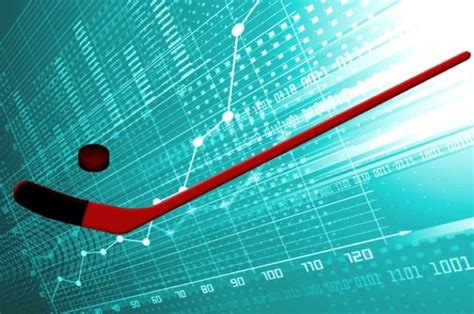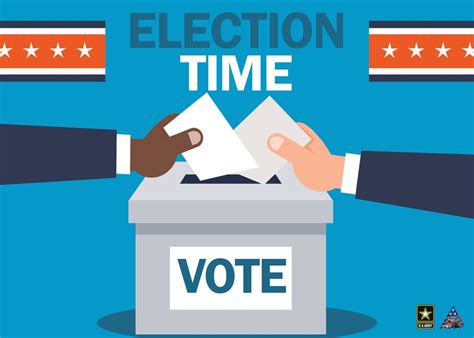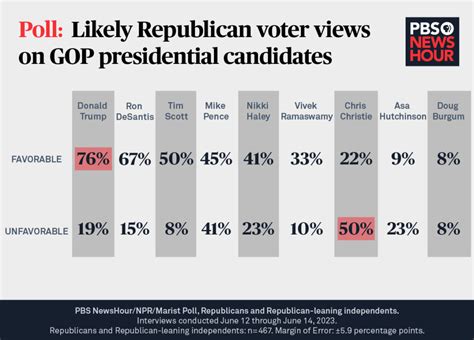Explore hockey analytics, key metrics, player performance enhancement, advanced statistics impact, application for game outcomes, and future trends for fans and analysts.In the fast-paced world of hockey, understanding the nuances of gameplay can make all the difference between victory and defeat. Enter hockey analytics—a powerful tool that is reshaping how teams strategize and evaluate performance. Whether you’re a devoted fan eager to delve deeper into the numbers or a budding analyst looking to find your footing in the sport, this beginner’s guide will equip you with the foundational knowledge you need. From decoding essential metrics to exploring the impact of advanced statistics on team strategies, we will uncover how hockey analytics not only enhances player performance but also optimizes game outcomes. Join us on this journey to understand the pivotal role analytics plays in the modern hockey landscape, and discover what the future holds for fans and analysts alike.
What Is Hockey Analytics and Why It Matters
Hockey analytics is the application of statistical analysis to the game of ice hockey, aiming to better understand player and team performance. This growing field leverages a variety of data points that go beyond traditional metrics like goals and assists. By incorporating advanced statistics, coaches, analysts, and fans can gain insights that help in making strategic decisions on and off the ice.
The significance of hockey analytics lies in its ability to provide a more nuanced understanding of player contributions and team dynamics. It allows for a more scientific approach to evaluating performance, leading to improvements in player development, game strategies, and ultimately, team success.
Some of the key reasons why hockey analytics matters include:
- Enhanced Player Evaluation: Advanced metrics provide a deeper analysis of player performance, helping to identify strengths and weaknesses.
- Informed Decision-Making: Coaches and general managers can make educated decisions regarding player trades, line combinations, and game strategies based on data-driven insights.
- Increased Fan Engagement: Fans are becoming more knowledgeable about statistics, making the game more interesting and engaging through in-depth analytical discussions.
- Long-Term Strategic Planning: Teams can use analytics to create development plans for players and formulate long-term strategies that consider performance trends.
Understanding and utilizing hockey analytics is crucial for anyone involved in the sport, whether it’s players, coaches, analysts, or fans. Embracing this data-driven approach can lead to a more competitive edge and a richer understanding of the game we love.
Key Metrics Used in Hockey Analytics Explained
Understanding the core metrics of hockey analytics is essential for evaluating player and team performance accurately. Below are some of the key metrics commonly used in the analysis of hockey games:
- Goals Above Replacement (GAR): This metric estimates the number of goals a player contributes compared to a replacement-level player. It provides insights into a player’s overall value to the team.
- Corsi: Corsi measures the difference in shots attempted (both for and against) while a player is on the ice. It helps indicate puck possession and team dominance during games.
- Fenwick: Similar to Corsi, Fenwick counts unblocked shots, offering a refined look at possession metrics without the distortion of blocked shots.
- Expected Goals (xG): This statistic quantifies the quality of scoring chances based on various factors, such as shot location and type. It provides a more comprehensive view of offensive efficiency.
- Zone Starts: This metric tracks the starting position of face-offs to analyze how a player is utilized in offensive versus defensive situations. It often correlates with individual performance metrics.
- PDO: PDO is the sum of a team’s shooting percentage and save percentage. It helps analysts identify teams that might be experiencing unsustainable performances, either positively or negatively.
These metrics, alongside traditional statistics, allow for a more nuanced understanding of player impacts, game strategies, and overall hockey performance. By leveraging hockey analytics, teams can make informed decisions that enhance their chances of success on the ice.
How Hockey Analytics Enhances Player Performance
Hockey analytics offers a treasure trove of insights that can significantly boost player performance on the ice. By analyzing various data points, coaches, analysts, and players themselves can pinpoint specific areas for improvement and tailor training regimens accordingly. Here are several ways in which hockey analytics enhances individual player performance:
1. Identifying Strengths and Weaknesses: Advanced statistics allow players and coaches to examine performance metrics in detail. By evaluating data on shot accuracy, time on ice, and zone entries, teams can identify a player’s strengths, such as shooting skills or defensive capabilities, while also recognizing weaknesses that need attention.
2. Personalized Training Programs: With insights from hockey analytics, training programs can be customized to fit the unique needs of each player. For instance, if analytics show a player struggles in certain scenarios, targeted drills can be implemented to enhance those specific skills.
3. Game Situation Preparation: Understanding how a player performs under different game situations can help both the player and coaching staff prepare better. Analytics can reveal how effective a player is during power plays versus even-strength situations, allowing for better strategic planning.
4. Injury Prevention: Hockey analytics can also contribute to injury prevention strategies by carefully monitoring player load and fatigue levels. By analyzing historical data on injuries and correlating it with ice time and physical demand, teams can make informed decisions on player rest and recovery.
5. Performance Evaluation and Feedback: Continuous feedback is essential for growth. Using analytics, coaches can provide real-time feedback to players, fostering an environment of constant learning and adaptation, ultimately leading to improved performance.
In conclusion, hockey analytics plays a pivotal role in enhancing player performance through detailed insights, personalized training, and strategic preparation, making it an essential tool in modern hockey.
The Role of Advanced Statistics in Team Strategy
In the fast-paced world of hockey, teams are constantly seeking an edge over their opponents, and hockey analytics plays a crucial role in shaping team strategy. Advanced statistics provide insights that go beyond traditional metrics, allowing teams to make data-driven decisions.
One of the primary advantages of utilizing advanced statistics is the ability to identify patterns in player and team performance. For example, metrics like Corsi and Fenwick help teams understand puck possession and shot attempts, shedding light on a team’s overall efficiency. By analyzing these statistics, coaches can adjust line combinations, defensive strategies, and even special teams play to optimize performance.
Moreover, hockey analytics enables teams to evaluate their opponents more effectively. By scouting with data, teams can pinpoint the strengths and weaknesses of rival squads, allowing for tailored game plans. This can include specific defensive matchups or tactical responses to an opponent’s playing style, ultimately influencing the outcome of games.
In-game decision-making is another area where advanced statistics have proven invaluable. Coaches increasingly rely on real-time data to assess player performance and game situations. For instance, statistical models can predict the likelihood of scoring based on player positioning and shot quality, aiding coaches in making timely decisions about line changes or goaltender pulls.
The integration of advanced statistics into team strategy highlights the shift towards a more analytical approach in sports. As technology continues to advance, the depth of hockey analytics will likely evolve, offering even more granular insights that can drive success on the ice.
Applying Hockey Analytics to Improve Game Outcomes
Hockey analytics has revolutionized how teams approach the game, allowing them to make data-driven decisions that can significantly impact outcomes on the ice. By leveraging advanced data metrics and sophisticated modeling techniques, coaches and management can identify strengths and weaknesses both individually and collectively. Here’s how hockey analytics can be applied to enhance game outcomes:
1. Informed Player Selection and Deployment
Teams can analyze player performance data to make better decisions regarding line combinations and matchups. For example, if analytics show that a particular forward performs exceptionally well when paired with a specific center, coaches can use this information to optimize line choices for upcoming games.
2. Game Strategy Adjustments
By examining metrics such as shot locations and puck possession, coaching staff can develop targeted strategies tailored for specific opponents. This data indicates which plays are most effective against certain defenses, enhancing the team’s offensive efficiency.
3. Real-time Decision Making
During games, real-time analytics display crucial performance indicators, allowing coaches to make tactical decisions swiftly. Access to live data helps in assessing player fatigue levels, allowing for timely substitutions and adjustments in strategy.
4. Injury Prevention and Management
Analytics goes beyond just performance improvement; it can help in player health management. By tracking minutes played and strain levels, teams can prevent injuries by managing player workloads and providing rest as necessary.
5. Fan Engagement Through Analytics
Modern hockey fans are increasingly interested in the intricacies of the game, and hockey analytics provides a wealth of information that can enhance their viewing experience. By presenting analytics during broadcasts and in-game events, teams can deepen fan engagement and provide meaningful insights into player and team performance.
6. Performance Benchmarking
One of the critical aspects of using hockey analytics is tracking players over time to benchmark performance. Statistical comparisons can highlight improvements or declines in a player’s skill set, leading to informed decisions about trade, signing, or development strategies.
| Metric | Description | Impact on Game Outcomes |
|---|---|---|
| Corsi | Measures shot attempt differential while at even strength | Gives insight into puck possession and team dominance |
| Fenwick | Similar to Corsi but excludes blocked shots | Highlights genuine offensive threats |
| xG (Expected Goals) | Calculates the probability of a shot resulting in a goal | Assesses efficiency in converting chances into goals |
Incorporating hockey analytics into the decision-making process can significantly improve game outcomes. By utilizing statistical metrics effectively, hockey teams can enhance their performance on the ice while fostering deeper connections with their fans.
Future Trends in Hockey Analytics for Fans and Analysts
As the world of sports continues to evolve, hockey analytics is also shaping up with new innovations and methodologies. Here are some key trends to look out for:
1. Increased Use of Machine Learning: With advancements in technology, machine learning algorithms are being increasingly applied to hockey analytics. These algorithms can process vast amounts of data to identify patterns and make predictions that were previously unattainable.
2. Wearable Technology: The integration of wearable devices such as GPS trackers and biometric sensors is changing the landscape. These devices provide real-time data on player movement, heart rate, and fatigue levels, enriching the dataset available for analysis and allowing for tailored training regimens.
3. Enhanced Visualization Tools: Presenting data in engaging ways helps analysts and fans better understand game dynamics. The future will see more interactive and real-time visualization tools that translate complex statistics into user-friendly formats, making insights more accessible.
4. Player Tracking Systems: The NHL’s introduction of advanced player tracking technology has paved the way for more sophisticated analytics. Future developments will refine this technology, allowing for even deeper insights into player movements and team strategies.
5. Fan Engagement: As hockey analytics becomes more prevalent, enthusiasts will find new ways to connect with the game. Expect an increase in platforms that allow fans to analyze statistics and game footage alongside professionals, fostering a greater appreciation for the strategic elements of the sport.
6. Integration with Betting Markets: As sports betting continues to grow, reliable hockey analytics will become crucial for bettors. Analytics platforms will increasingly provide insights that help bettors make informed decisions, blending traditional sports strategy with gambling analytics.
In summary, the future of hockey analytics is set to bring exciting innovations that benefit both analysts and fans alike, making the sport more dynamic and accessible.
Frequently Asked Questions
What is hockey analytics?
Hockey analytics refers to the use of statistical analysis to evaluate player performance, team strategies, and game outcomes in ice hockey.
Why is hockey analytics important?
Hockey analytics helps teams make informed decisions regarding player acquisitions, game strategies, and performance evaluations, ultimately improving overall team performance.
What are some common metrics used in hockey analytics?
Common metrics include Corsi, Fenwick, goals above replacement (GAR), expected goals (xG), and zone entries, which help quantify a player’s contribution to the game.
How can beginners start learning about hockey analytics?
Beginners can start by reading books, following online courses, and engaging with hockey analytics communities on social media platforms or forums.
What role do advanced stats play in evaluating players?
Advanced stats provide a deeper insight into player performance beyond traditional statistics, identifying strengths and weaknesses that may not be visible through conventional metrics.
Can hockey analytics predict game outcomes?
While hockey analytics can improve predictions about game outcomes by analyzing historical data and player performance, the unpredictability of sports means they are not always accurate.
What are the criticisms of hockey analytics?
Critics argue that analytics may overlook the subjective elements of the game, such as physicality or individual player impact, relying too heavily on numbers without considering the context.









